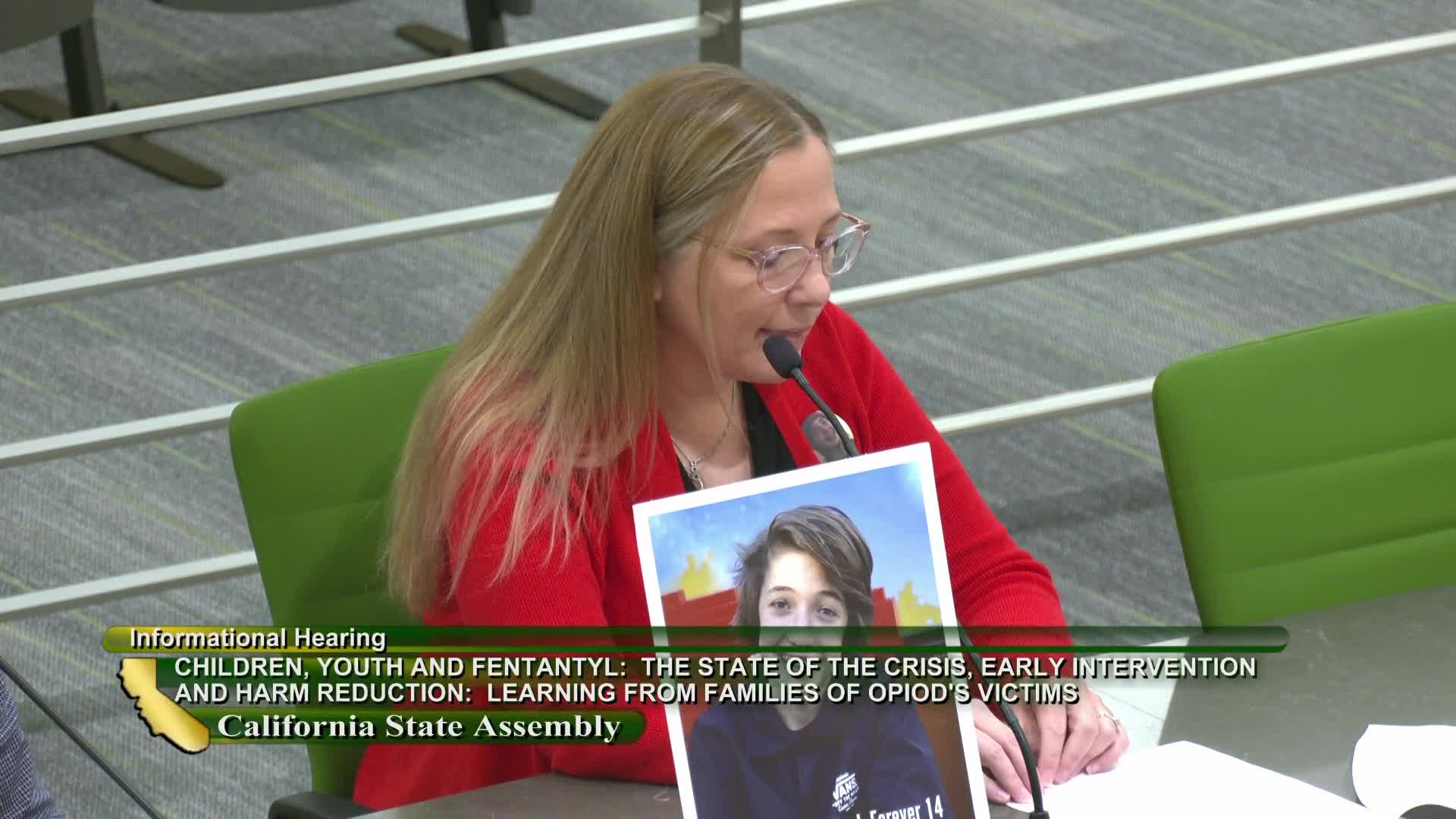Advocates push for naloxone access amid fentanyl crisis
August 12, 2024 | California State Assembly, House, Legislative, California
This article was created by AI summarizing key points discussed. AI makes mistakes, so for full details and context, please refer to the video of the full meeting. Please report any errors so we can fix them. Report an error »

In a recent government meeting, advocates for drug awareness and prevention highlighted the urgent need to address the escalating fentanyl crisis and its intersection with social media. The discussions were led by representatives from the Alexander Neville Foundation and the Drug Awareness Foundation, both of which aim to educate young people about the dangers of illicit drugs and the pervasive influence of platforms like Snapchat in drug distribution.
The Alexander Neville Foundation reported that it has reached over 300,000 individuals in the past three years, focusing on youth-informed education. The foundation's approach emphasizes the importance of understanding the realities of fentanyl poisoning, which often occurs when individuals unknowingly consume drugs laced with the potent opioid. Advocates stressed that many young people are unaware that substances they believe to be safe, such as oxycodone or Xanax, may actually contain lethal doses of fentanyl.
The meeting underscored the need to shift the narrative around drug-related deaths from \"overdoses\" to \"poisonings\" to reduce stigma and foster open conversations among parents and educators. This change in terminology aims to encourage families to engage with the issue rather than dismiss it as irrelevant to their lives.
Additionally, the advocates called for increased access to naloxone, a life-saving medication that can reverse opioid overdoses. They proposed that naloxone should be readily available in schools and public spaces, similar to how automated external defibrillators (AEDs) are distributed. The emphasis was placed on empowering youth, parents, and educators as first responders in the fight against drug-related fatalities.
The Drug Awareness Foundation shared personal stories of loss, including the tragic death of a young man from fentanyl poisoning. The foundation's representatives highlighted the importance of educating students about harm reduction strategies, such as using fentanyl test strips and ensuring naloxone is accessible.
Overall, the meeting served as a call to action for communities to confront the realities of drug misuse and to equip young people with the knowledge and tools necessary to navigate these dangers. The advocates emphasized that while drug use cannot be normalized, the acknowledgment of its prevalence is crucial in preventing further tragedies.
The Alexander Neville Foundation reported that it has reached over 300,000 individuals in the past three years, focusing on youth-informed education. The foundation's approach emphasizes the importance of understanding the realities of fentanyl poisoning, which often occurs when individuals unknowingly consume drugs laced with the potent opioid. Advocates stressed that many young people are unaware that substances they believe to be safe, such as oxycodone or Xanax, may actually contain lethal doses of fentanyl.
The meeting underscored the need to shift the narrative around drug-related deaths from \"overdoses\" to \"poisonings\" to reduce stigma and foster open conversations among parents and educators. This change in terminology aims to encourage families to engage with the issue rather than dismiss it as irrelevant to their lives.
Additionally, the advocates called for increased access to naloxone, a life-saving medication that can reverse opioid overdoses. They proposed that naloxone should be readily available in schools and public spaces, similar to how automated external defibrillators (AEDs) are distributed. The emphasis was placed on empowering youth, parents, and educators as first responders in the fight against drug-related fatalities.
The Drug Awareness Foundation shared personal stories of loss, including the tragic death of a young man from fentanyl poisoning. The foundation's representatives highlighted the importance of educating students about harm reduction strategies, such as using fentanyl test strips and ensuring naloxone is accessible.
Overall, the meeting served as a call to action for communities to confront the realities of drug misuse and to equip young people with the knowledge and tools necessary to navigate these dangers. The advocates emphasized that while drug use cannot be normalized, the acknowledgment of its prevalence is crucial in preventing further tragedies.
View full meeting
This article is based on a recent meeting—watch the full video and explore the complete transcript for deeper insights into the discussion.
View full meeting
